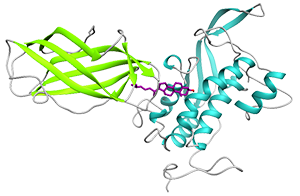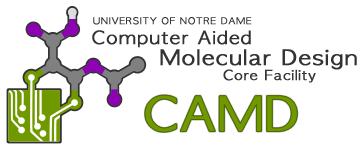
NIEMANN-PICK TYPE C
The transport of cholesterol from protein NPC2 to NPC1 is essential for cholesterol homeostasis in late endosomes. It is involved in a number of diseases, including Niemann-Pick Type C (NPC), which primarily affects children and is fatal in the vast majority of cases.
CAMD scientists developed models of the NPC1-NPC2-cholesterol complex at the beginning and end of the transport, as well as the unligated NPC1-NPC2 complex, and studied them in 80 ns MD simulations. Relevant residues for binding were identified using MM/GBSA calculations, rationalizing the results of previous mutagenesis experiments. From the calculated energies and Nudged Elastic Band (NEB) evaluation of the cholesterol transfer mechanism, CAMD researchers proposed an atomistic model of the transfer of cholesterol from NPC2 to NPC1 through the formation of an intermediate NPC1-NPC2 complex.
This model is in general agreement with experiment and significantly expands our understanding of the cholesterol transport process at the atomic level. When cholesterol is bound to NPC2, it increases the association constant for the formation of the NPC1-NPC2 complex. Once the complex is formed, cholesterol is transferred from NPC2 to NPC1, causing a decrease of the association constant of the protein-protein complex and dissociation. The free NPC2 protein re-enters the cycle, whereas NPC1 transports cholesterol through the membrane.
This model is in general agreement with experiment and significantly expands our understanding of the cholesterol transport process at the atomic level. When cholesterol is bound to NPC2, it increases the association constant for the formation of the NPC1-NPC2 complex. Once the complex is formed, cholesterol is transferred from NPC2 to NPC1, causing a decrease of the association constant of the protein-protein complex and dissociation. The free NPC2 protein re-enters the cycle, whereas NPC1 transports cholesterol through the membrane.
